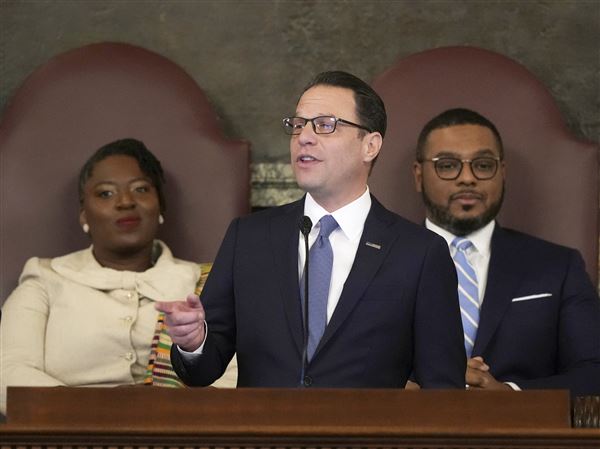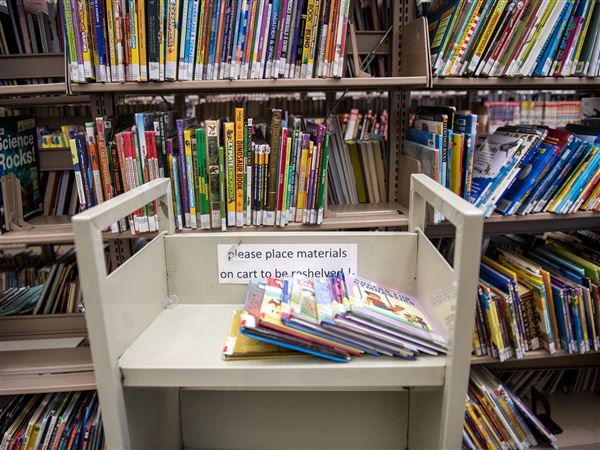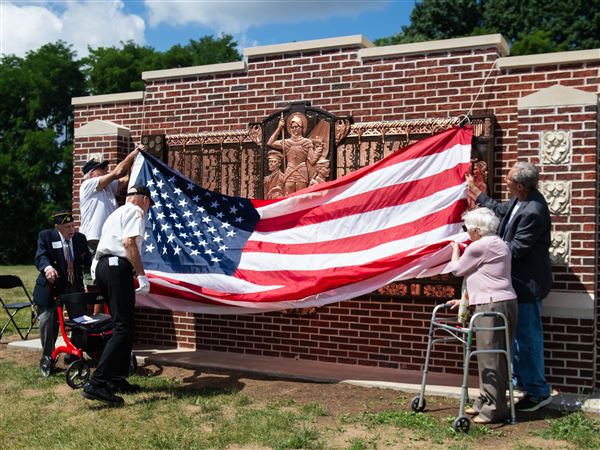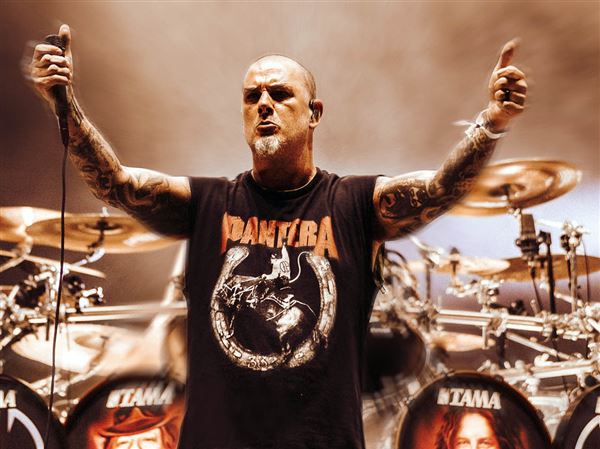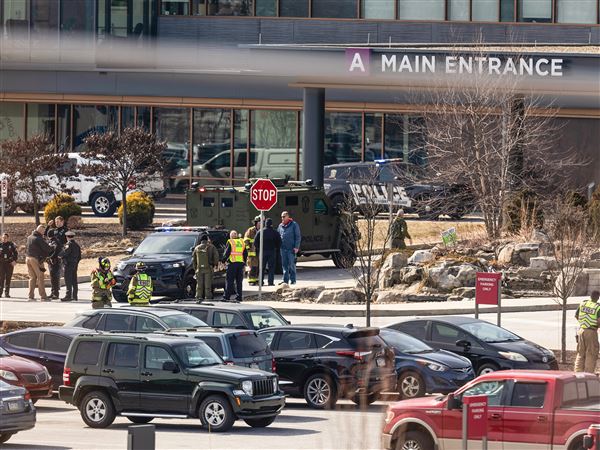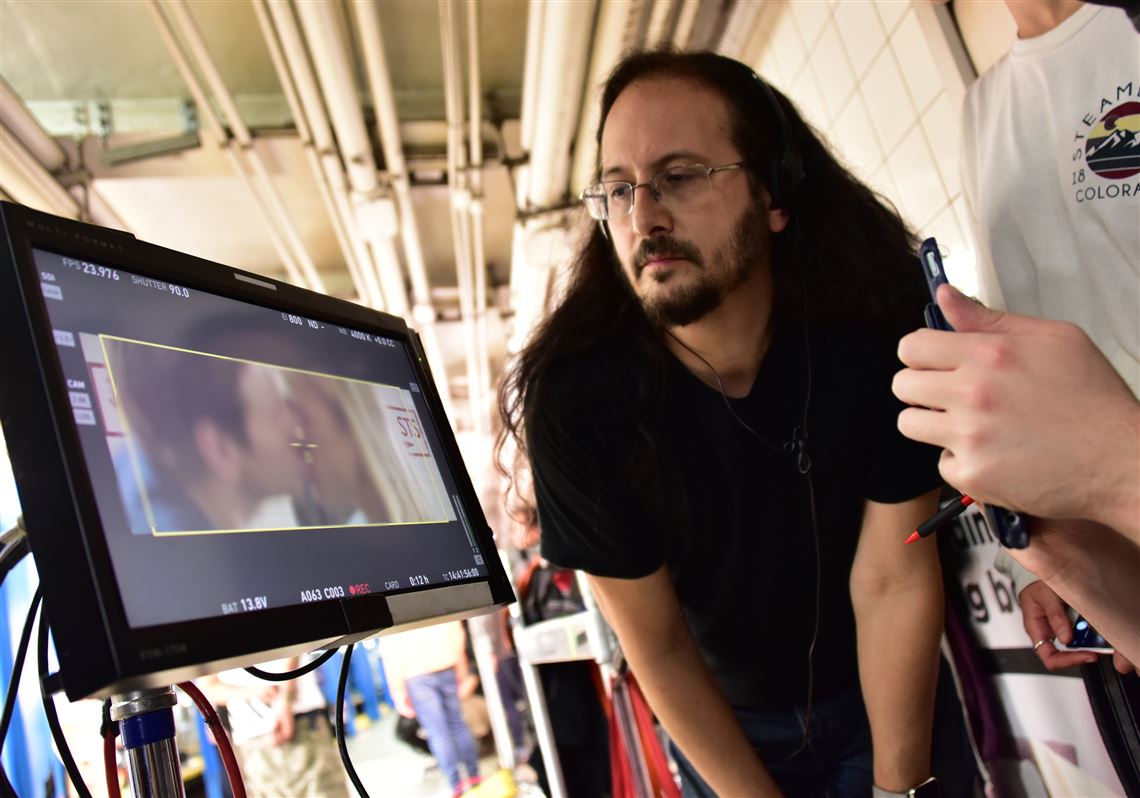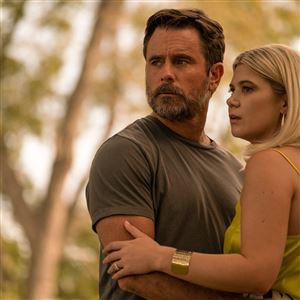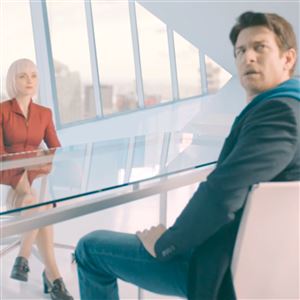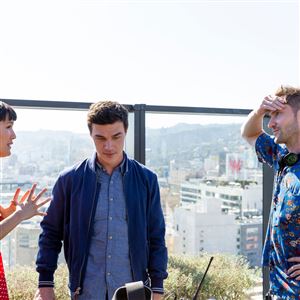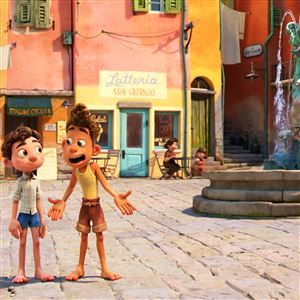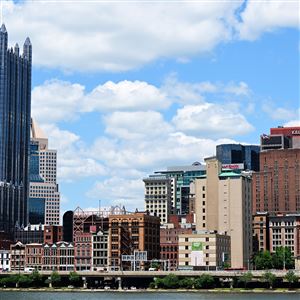Creative inspiration can strike at a filmmaker’s lowest moment.
Harry Greenberger, a 53-year-old Butler native, discovered that the hard way after a bad breakup. He was surprised to discover that being single wasn’t what he was dreading the most. It was his friends and family urging him to start dating again immediately that filled with him anxiety.
“I was thinking about how you’re in no frame of mind to meet someone when you just had your heart broken,” Greenberger told the Post-Gazette. “When you go back to all the places you used to go to, you realize everyone has moved on and those scenes aren’t a scene anymore. You start to feel like a ghost and you’re haunting those old scenes.”
Those post-breakup thoughts and feelings led Greenberger, who now lives in New York City, to make “Here After,” an afterlife dramedy that he wrote and directed starring Christina Ricci, Andy Karl, Michael Rispoli and Nora Arnezeder. After a lengthy production process and a pandemic that made a theatrical release all but impossible, “Here After” will finally become available Friday via video on demand.
Greenberger cut his teeth in the entertainment industry in Pittsburgh. He often ventured into the city to visit his favorite shops like Eide’s Entertainment in the Strip District and the late Heads Together in Squirrel Hill. He saw his first film for adults, Warren Beatty’s 1981 historical drama “Reds,” at Squirrel Hill’s Manor Theatre.
While studying film at Ithaca College in Ithaca, N.Y., he got a job working in TV commercials through the owner at the dry cleaners in Butler that his parents frequented. He ended up working on “hundreds and hundreds” of local commercials and joined the camera or electrical crews for Hollywood projects filming here.
“A lot of other film towns like New York are more competitive,” Greenberger said. “But in Pittsburgh, everyone took me under their wing and embraced someone who was passionate and nerdy about film.”
His IMDB credits include work as an electrician on the 1992 Tim Robbins mockumentary “Bob Roberts,” a camera production assistant on John Landis’ 1992 vampire flick “Innocent Blood” and the second assistant camera on Kevin Smith’s 1999 fantasy comedy “Dogma.” He recalled shooting a scene in “Dogma” in which a toilet overflowed and filled the room with a combination of clay and oatmeal that was “visually horrifying but smelled like the best breakfast you ever had.”
After relocating to New York City, Greenberger helped out on shoots for Bruce Springsteen, Ryan Adams and Jesse Malin. He wound up co-directing the music video for Malin’s song “Disco Ghetto,” which is where he met “Weeds” star Mary-Louise Parker. The two are still close and Greenberger said “her support and faith in me” were instrumental in getting both “Here After” and his other directorial effort, “Staring at the Sun,” made.
In “Here After,” Michael (Karl) dies and is forced to find reciprocated true love before his soul can move on to the next plane of existence. The idea to make a movie about an afterlife where “there was a metaphorical gun to your head to find love and meaning” came to Greenberger in 2011.
“There’s inherent possibilities for comedy and exaggerated drama in the idea of the afterlife,” he said. “I’ve always been a fan of that kind of thing. Even if one doesn’t believe in it, it’s a lot of fun to play in that sandbox.”
Greenberger responded to online chatter from people who watched the trailer for “Here After” and accused him of shaming single people.
“It was meant to be a comedy about loneliness and about how the world can make you feel excluded. I always felt like the film was single-supporting or single-empathizing. It was meant to be the opposite of single-shaming.”
He planned to shoot the movie in 2012 but scheduling conflicts derailed it. Greenberger was excited to be collaborating again with Ricci, whom he met in the early 1990s while working on the Pittsburgh set of “The Cemetery Club.” In “Here After,” she plays Michael’s guide to this “more bureaucratic afterlife,” and somehow manages to be “simultaneously modern and timeless,” he said.
Filming got underway in late 2017. Some subtle yet complicated visual effects made post-production drag on, he said, and the film was finally ready to premiere in March 2020. “Here After” was shown once at a theater in San Jose, Calif., before COVID-19 hit.
Since he already had a distributor in Vertical Entertainment, Greenberger decided not to show the film on the festival circuit and just wait out the pandemic. Vertical Entertainment opted to put it out on VOD.
That was disappointing for Greenberger, but he also sees benefits to releasing the film via video on demand.
“No one gets into film dreaming that people will watch their movie on their phone,” he said. “The fact that it’s going to be so wildly distributed is a fantasy to me. ... I’d love for it to be in every theater all over the country, but in Hollywood terms, it’s a very low-budget film, and the idea that it’s able to be seen by so many people, I’m still pretty happy about it.”
Joshua Axelrod: jaxelrod@post-gazette.com and Twitter @jaxelburgh.
First Published: July 22, 2021, 10:00 a.m.
Updated: July 22, 2021, 11:58 a.m.
